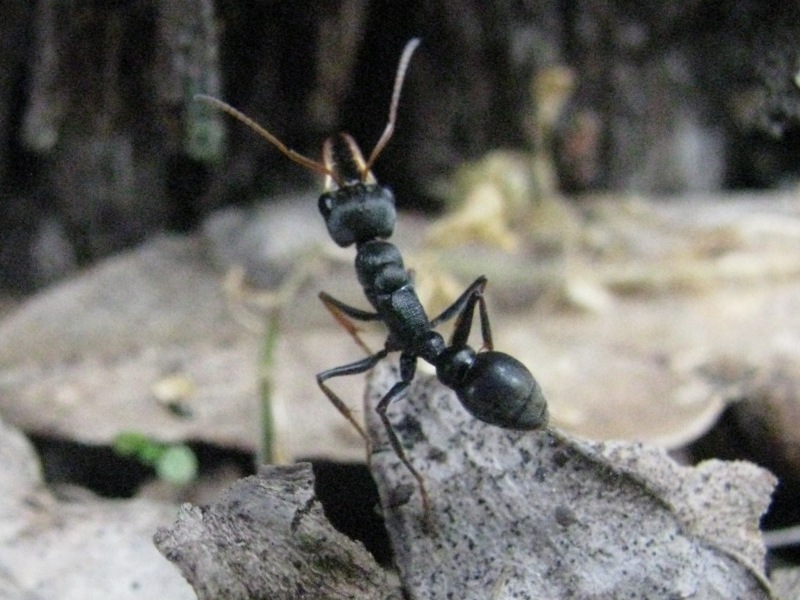�
�
�
���
Myrmecia pilosula
Jack Jumper Ant
Kingdom
Animalia
Phylum
Arthropoda
Class
Insecta
Order
Hymenoptera
Family
Formicidae
Genus
Myrmecia
Species
Myrmecia pilosula
Distinguishing features
They are black or red and black, and may have yellow or orange legs, antennae and mandibles.
Their characteristic jumping motion when in an agitated state gave them their name. Their nests may be inconspicuously hidden under a rock, or may be formed from a 20 to 60 cm diameter mound of finely granular gravel. (Wikipedia)
Size
- Up to 1.2 cm (Length of specimen)
Wingspan
- Wingspan data is not yet available.
Synonyms
Distribution
Distribution and habitat preferences
The ants are recorded throughout Australia, but are most often found in Tasmania, rural Victoria, New South Wales, Australian Capital Territory and the Adelaide Hills of South Australia. (Wikipedia)
Web resources
Danger
- significant discomfort - The symptoms of the stings of the ants are similar to stings of the fire ants. The reaction is local swelling and reddening, and fever, followed by formation of a blister. The heart rate increases, and blood pressure falls rapidly. In individuals allergic to the venom (about 3% of cases), a sting sometimes causes anaphylactic shock. (Wikipedia)




